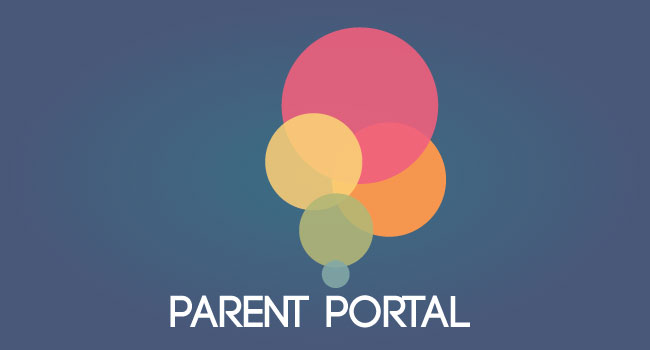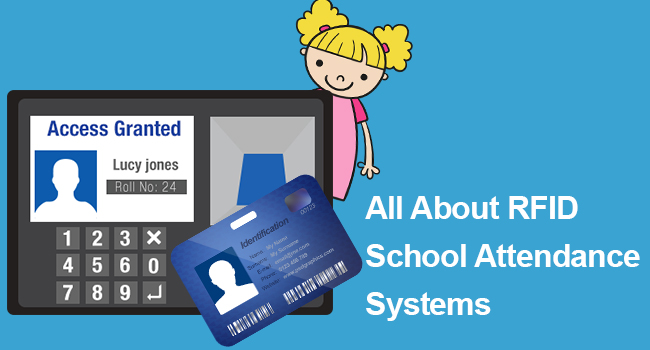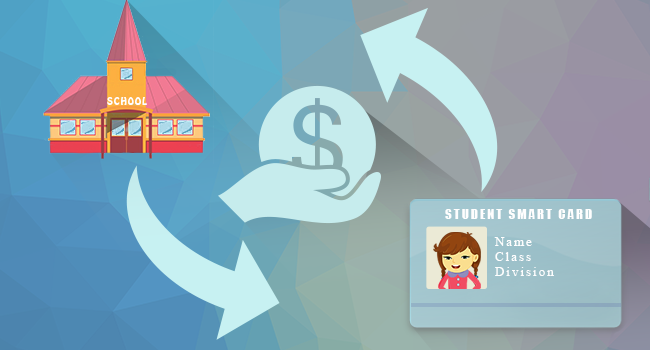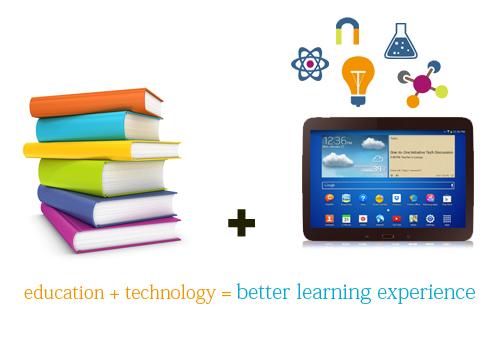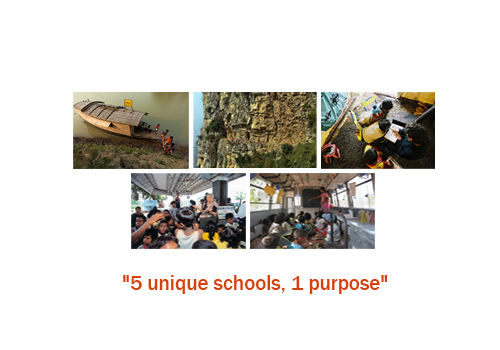As a parent, you too have a role to play in your child’s schooling, rather than just letting the teacher take care of everything. You have to know what is happening in your child’s school and how he or she is faring in the class. To know that, you must attend parent-teacher meetings.
Get Best Free Parental Apps (Check it Now)
Parent-teacher meetings give you the opportunity to discuss about your child’s performance in school and to share your fears or worries regarding your child with their teachers.But, working parents find it impossible to make time to attend these meetings that most probably fall during working days in schools. As a solution, many companies have come up with mobile and web apps to ensure smooth parent-teacher communication whenever possible.
Here is a list of 13 apps that can help parents communicate with their child’s teachers:
The Parent Portal software by Edsys keeps parents updated about how their child performs in school. The communication center feature of the software enables easy parent-teacher communication whenever they wish for, without having to go to their schools to meet teachers. Apart from that, you can also track the academic progress of your child, track their school bus location and even pay their school fees online using Parent Portal. You can also get notified about the latest happenings in your child’s school using this app.
2. BuzzMob
This App enables parent-teacher communication by connecting them on a private network which requires to be authorized. It is similar to the social networking platforms where updates can be posted. Students can also use this BuzzMob app to post things and work together for projects, assignments etc.
3. The teacher App & Grade Book
The teacher App & Grade Book is a relatively new tool which is freely available to the users. Parents and teachers can use the tool to interact with each other using the parent messaging feature. Also available with it is an interactive calendar, event notifications and course-wise grade reports of students. Parents can keep track of student’s attendance records and upcoming events in their child’s school using this app.
It is an education-focused app where teachers can discuss about their students’ academic progress, relevant topics and latest happenings in the school with parents and students. This acts as an online discussion platform where teachers can create discussion threads, upload videos, articles, images etc. Collaborize Classroom is a secure app where the content is visible only to authorized users.
5. Remind 101
Do you want to remind your students’ parents about the class party tomorrow? Calling each one of them or sending them e-mails individually is an impossible task. The Remind101 app is a solution. With the help of the app, you can create an account where all parents of your students can join, with a single text message. Teachers can interact with parents using the app.
6. TeacherKit
Using this TeacherKit app, teachers can create individual user profiles for every student where they can mark the students’ attendance, add details of the students’ grades and behavior in class. Teachers can use the app to e-mail parents directly. All the profiles are kept separately and can be edited or deleted if need.
This app is meant for physical education. The digital resource available with the app enables physical education teachers to explain students about movement and running. Parents can also join the physical education classes using the Running Start app. They can learn about different running techniques and for other physical activities which can help them guide their children to perform better.
8. ClassDojo
This app helps teachers to improve the classroom behavior promptly and easily. Teachers can share the details on each child’s behavior with parents as well as other school authorities. Using this ClassDojo app, teachers can provide positive behavior feedback and thus manage classes well.
9. Edmodo
Edmodo app makes the daily life of teachers simple as they can interact with students anytime from anywhere. By using this app, you can have safe classroom discussions, publishing assignments, tracking student’s progress, file sharing and uploading. And they can share these details to parents and thereby improving parent-teacher communication.
10. Schoolcircle
Schoolcircle helps teachers to easily handle administrative task, that is, usually time-consuming. Parents will be able to get daily and weekly reminders for everything that is related with their child. Some of the notable features associated with the app are its powerful sharing(able to share events and photos via the app and parents can see it), obvious volunteering, good partnership between parents and teachers(they work as a team and make school management easier).
11. Class Messenger
With this Class Messenger app, two-way messaging is possible between parents and teachers. They can discuss about child’s capability, their progress, struggles, and so forth. Also, parents are able to get test results, reminders, photos of various events, competitions and its videos.
12. VolunteerSpot
You will be able to organize group meetings, parent-teacher meetings, and group mails with VolunteerSpot. The VolunteerSpot app can be used for arranging field trips, events, competitions, and other career related programmes.
Asset help parents to review the attendance details, behavior, school reports (both current year and previous year reports) and student’s progress in core subjects. At the touch of a button, parents will get an overall idea about their child’s performance in the school.
14. Teno
One of India’s leading mobile app to foster a fruitful alliance between parents and teachers, Teno has a tied-up with elite educators and principals to help them effortlessly create a better management system. In addition to being an effective tool for conveyance, it aids in School fee payment, E-learning, digital attendance, timetable, record student grades etc.
15. Classting
A communication tool for all the members of the school community – Teachers, Students, classmates, parents. A cheerful and fun filled social media platform for students to interact with each other and share class posts, photos and notifications.
16. Parent Class 123
The prevalent functions of this app lets parents receive feedback from teacher, view visuals of class stories, videos and stay updated with important announcements.
Parents can be kept in the know of the students conduct at school as the app lets teachers keep tab of student behavior and attendance.
The parent can reciprocate the action by sharing the child’s etiquettes and behavior in the confinements of home. It is a cross platform app which functions on both android and ios.
This develops a rapport between parents and booth parties come to a better understanding of what is crucial for the child’s development.
17. Bloomz
This award winning app makes it easy for teachers to stay in touch with children’s parents. Apart from communication, teachers can securely upload pictures, classroom updates and also keep them in the loop about upcoming events. The other features include sending alerts for important matters, scheduling a parent teacher meet within seconds and managing events and calendar with the aid of built-in reminder. The app works on both android and ios platforms.
18. Classtag parent teacher app
An out of the way tradition to let parents be a part of their child’s success can be initiated though this app. The app was build with a vision of bringing in family support to the student life in the most un- conventional manner. The app lets teachers and parents organize activities in conjunction with each other by adding insights from both parties. It grows personal relations and gives rise to volunteering openings considering the interests of the parent.
The parents can connect with all schools and clubs who use Teacher2Parents. The app is the best platform to view the announcements of notices and events to be held in the school.
It is a reliable and convenient way of conveying important or urgent information to parents.
Parents can book an appointment with the teachers in advance. The app has an efficient email function to broadcast information to all the members of the school ecosystem.
The app lets us access all school updates under a single roof. It is controlled by the school and all the numbers of the users are registered on to the text messaging service under their administration.
20. School Connect
The app is the work of Tata ClassEdge who tied up with schools to improve the communications between parents and teachers.
The mobile app helps parents stay updated with school activities, the child’s academic performance and also helps to easily access the academic information and provides an effortless medium to stay connected with the school.
21. Google classroom
Google classrooms promotes communication, tweaks assignments, and increases engagement thus making teaching a lot more purposeful.
This is a virtual classroom which defies the confinements of a school building making it possible to set up anywhere as per the comfort of the teachers and the children with even the guardians involvement.
Get Best Free Parental Apps (Check it Now)
The parents receive an account of student’s progress, missing work, upcoming assignments and class activities. This prevents matters of poor performance to be brought to notice earlier for parents to take necessary actions.
These apps allow you to interact with your child’s teachers. But, communicating with your child’s teachers isn’t just about parent-teacher meetings. It will let your child know the role you, as his or parent plays in their education. Also, as a parent, it is your responsibility to know about the physical, social and mental development of your child and help them in the process. Always maintain a positive relationship with your child’s teachers and keep discussing your child’s progress with them using the available apps. This can help your child apply their potential to the fullest to get outstanding results.



